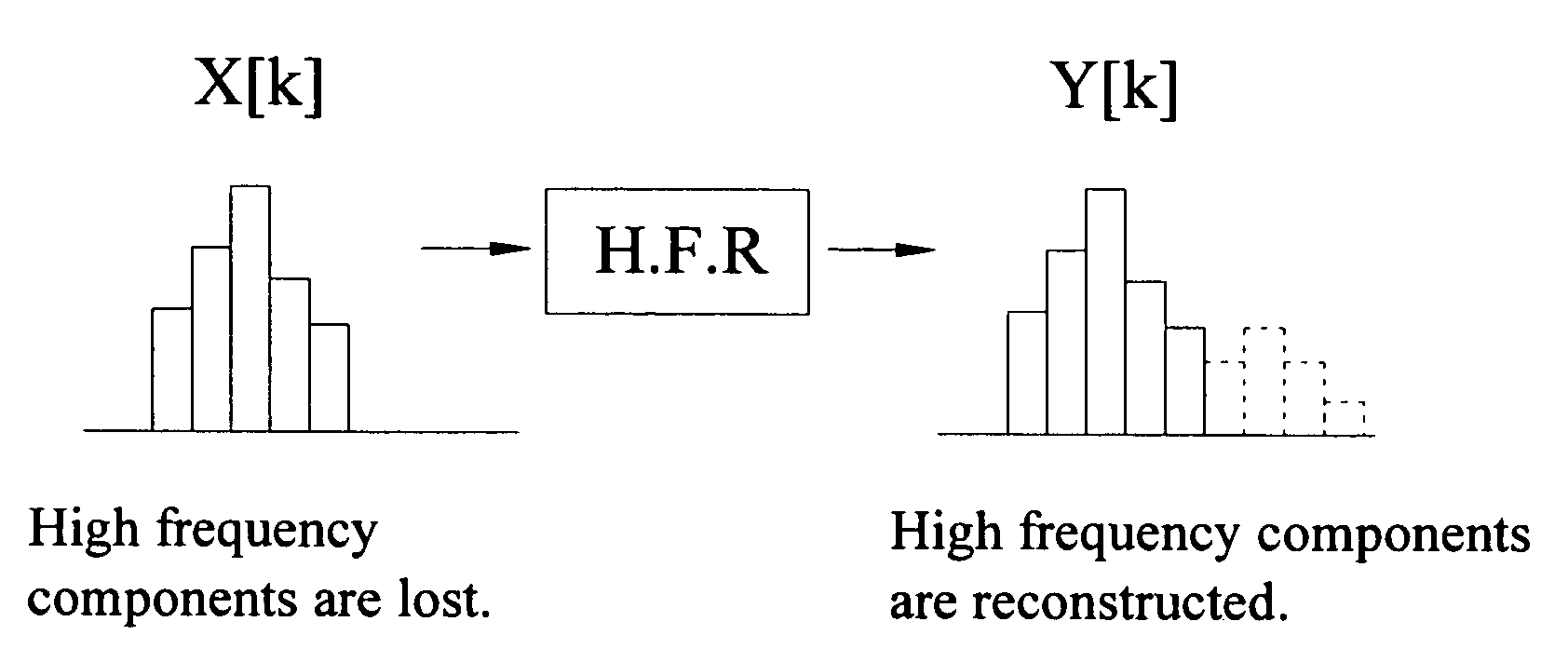High frequency reconstruction by linear extrapolation
a high frequency and extrapolation technology, applied in the field of audio signal reconstruction, can solve the problems of mainly lost high frequency components and limited speech reconstruction to the effect of a general audio signal
- Summary
- Abstract
- Description
- Claims
- Application Information
AI Technical Summary
Benefits of technology
Problems solved by technology
Method used
Image
Examples
first embodiment
[0026]In the present invention, a frequency-domain method is provided for reconstructing the high frequency components of an audio signal. The reconstruction method is based on the transform coefficients of the audio signal. FIG. 2 illustrates the block diagram of the high frequency reconstruction system using the frequency-domain method.
[0027]The high frequency audio signal reconstruction system as shown in FIG. 2 comprises a transform module 201 for transforming an audio signal into transform coefficients in the frequency domain. A high frequency reconstruction module 202 reconstructs transform coefficients of high frequency components by means of linear extrapolation based on minimizing least squares of the logarithm scale magnitudes of the transform coefficients of lower frequency components. An inverse transform module 203 transforms the transform coefficients of the lower frequency components and the reconstructed high frequency components to synthesize the output audio signal...
second embodiment
[0064]The idea of high frequency reconstruction in the frequency domain can be extended to high frequency reconstruction using filterbanks. In this invention, filterbank signals are used to reconstruct the high frequency components. FIG. 9 illustrates the block diagram of the reconstruction system based on filterbank signals.
[0065]The high frequency audio signal reconstruction system of the present invention comprises an analysis filterbank 901 for splitting an audio signal over a time segment into a plurality of filterbank signals. A high frequency reconstruction module 902 reconstructs high frequency filterbank signals by means of linear extrapolation based on minimizing least squares of the logarithm scale magnitudes of the envelope elements of lower frequency filterbank signals. A synthesis filterbank module 903 combines the lower frequency filterbank signals and the reconstructed high frequency filterbank signals to synthesize the output audio signal.
[0066]A time domain audio s...
PUM
 Login to View More
Login to View More Abstract
Description
Claims
Application Information
 Login to View More
Login to View More - R&D
- Intellectual Property
- Life Sciences
- Materials
- Tech Scout
- Unparalleled Data Quality
- Higher Quality Content
- 60% Fewer Hallucinations
Browse by: Latest US Patents, China's latest patents, Technical Efficacy Thesaurus, Application Domain, Technology Topic, Popular Technical Reports.
© 2025 PatSnap. All rights reserved.Legal|Privacy policy|Modern Slavery Act Transparency Statement|Sitemap|About US| Contact US: help@patsnap.com



